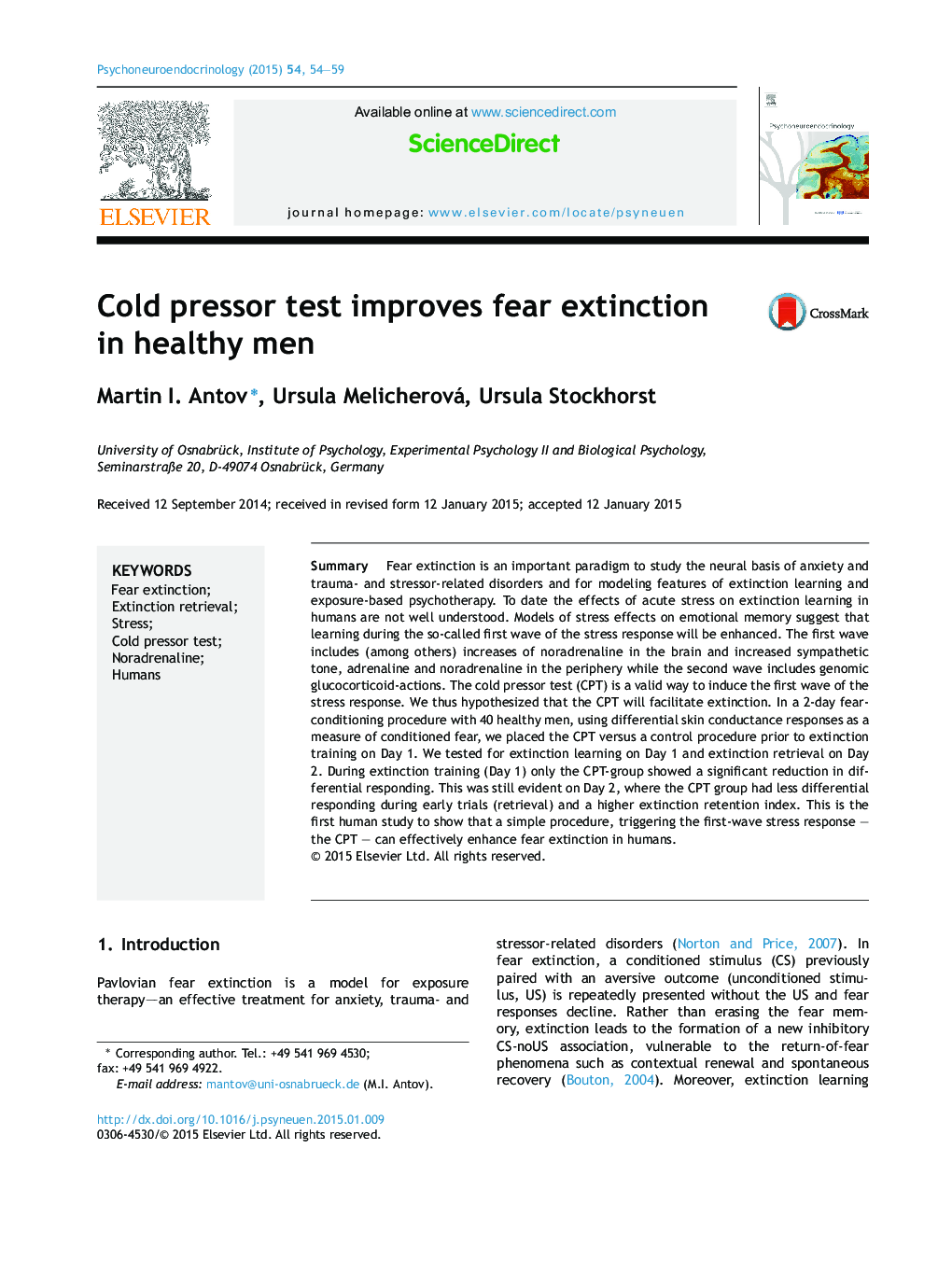| کد مقاله | کد نشریه | سال انتشار | مقاله انگلیسی | نسخه تمام متن |
|---|---|---|---|---|
| 6819021 | 547487 | 2015 | 6 صفحه PDF | دانلود رایگان |
عنوان انگلیسی مقاله ISI
Cold pressor test improves fear extinction in healthy men
ترجمه فارسی عنوان
آزمون فشارخون سرد باعث ترس از بین رفتن ترس در مردان سالم می شود
دانلود مقاله + سفارش ترجمه
دانلود مقاله ISI انگلیسی
رایگان برای ایرانیان
کلمات کلیدی
ترس انقراض، بازیابی انقراض، فشار، تست پرس مطبوعات سرد نورآدرنالین، انسان،
موضوعات مرتبط
علوم زیستی و بیوفناوری
بیوشیمی، ژنتیک و زیست شناسی مولکولی
علوم غدد
چکیده انگلیسی
Fear extinction is an important paradigm to study the neural basis of anxiety and trauma- and stressor-related disorders and for modeling features of extinction learning and exposure-based psychotherapy. To date the effects of acute stress on extinction learning in humans are not well understood. Models of stress effects on emotional memory suggest that learning during the so-called first wave of the stress response will be enhanced. The first wave includes (among others) increases of noradrenaline in the brain and increased sympathetic tone, adrenaline and noradrenaline in the periphery while the second wave includes genomic glucocorticoid-actions. The cold pressor test (CPT) is a valid way to induce the first wave of the stress response. We thus hypothesized that the CPT will facilitate extinction. In a 2-day fear-conditioning procedure with 40 healthy men, using differential skin conductance responses as a measure of conditioned fear, we placed the CPT versus a control procedure prior to extinction training on Day 1. We tested for extinction learning on Day 1 and extinction retrieval on Day 2. During extinction training (Day 1) only the CPT-group showed a significant reduction in differential responding. This was still evident on Day 2, where the CPT group had less differential responding during early trials (retrieval) and a higher extinction retention index. This is the first human study to show that a simple procedure, triggering the first-wave stress response - the CPT - can effectively enhance fear extinction in humans.
ناشر
Database: Elsevier - ScienceDirect (ساینس دایرکت)
Journal: Psychoneuroendocrinology - Volume 54, April 2015, Pages 54-59
Journal: Psychoneuroendocrinology - Volume 54, April 2015, Pages 54-59
نویسندگان
Martin I. Antov, Ursula Melicherová, Ursula Stockhorst,
